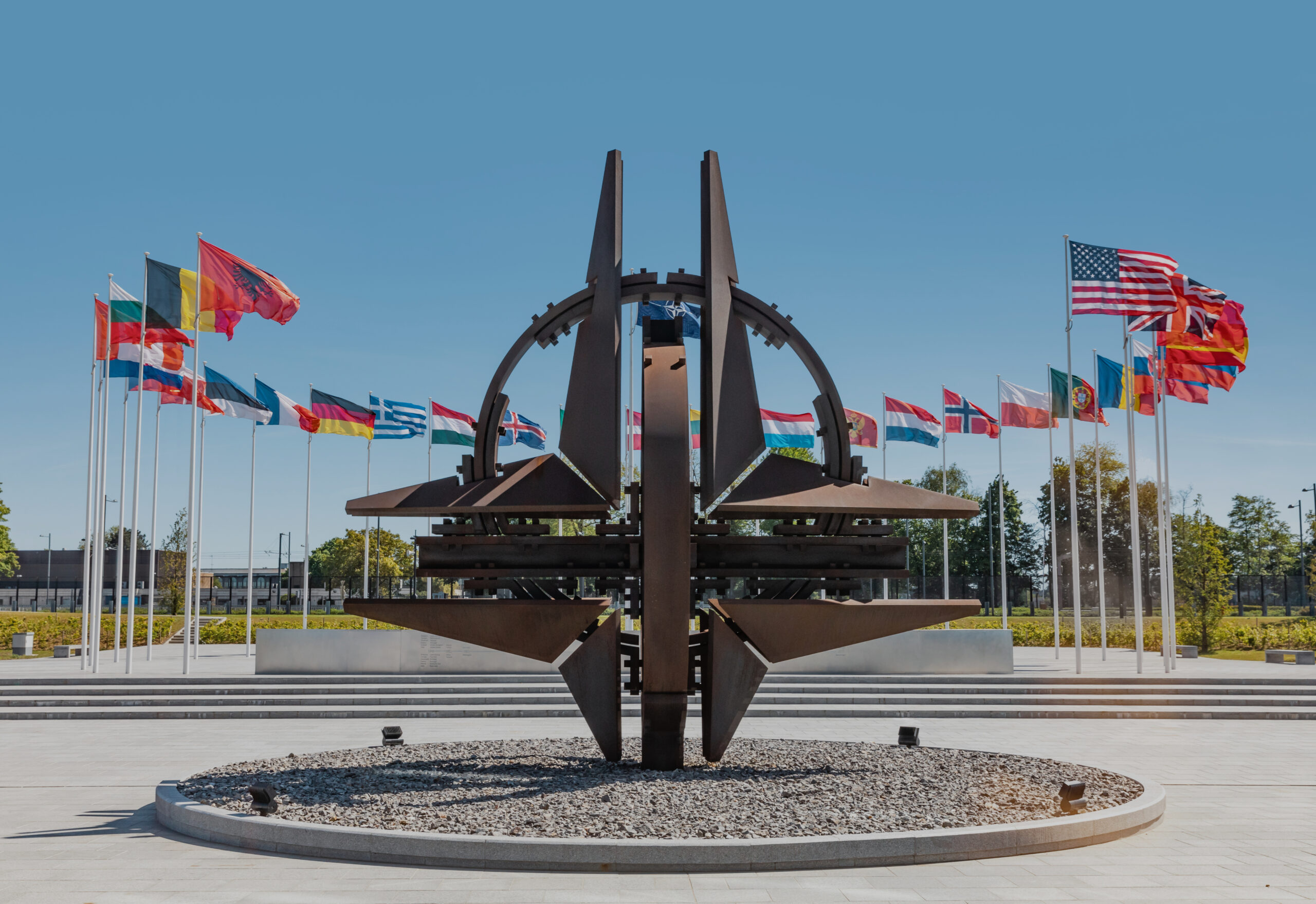
Nie masz czasu na zapoznanie się z całością artykułu?
Wystarczy, że klikniesz ikonę „oznacz artykuł do przeczytania później”. Wszystkie zapisane publikacje znajdziesz w profilu czytelnikaTechnological Thucydides’s Trap

The Polish version was published: 2.4.2019
Some experts claim that our world is inevitably headed towards a confrontation between the United States and China. It is no longer a matter of “if”, but a matter of “when” and “how”. The mechanism whereby the main superpower notices other states growing in power and makes the strategic decision to act in order to slow down their growth is known as Thucydides’s Trap. The term comes from a similar situation which occurred in the 5th century BCE, when the rise of Athens sparked concerns in Sparta, eventually leading to a war in which the latter defended their dominance from the aspiring city-state. This interpretation of the mechanism is deterministic and structural. This means that political actors have little influence on the process. Nevertheless, how the behaviours of other entities are perceived and interpreted is very important to assessing whether another state is friendly or hostile, similar to the ability to estimate one’s own potential and that of one’s rivals. When the pace at which changes in the distribution of power are occurring is perceived as threatening, the state which attempts to defend its position may, as history shows us, resort to starting a conflict.
Thucydides’s trap also comprises two additional phenomena. First, in an attempt to maintain its dominance, the leading superpower must increase the distance between it and the pretender quicker than the pretender is able to catch up. Second, the pretender, provided it possesses the necessary resources, is in a more advantageous position as it can learn from the mistakes of the current leader. In addition, this type of situation is inevitably accompanied by an arms race between rivals. This mechanism has recently been brought back to the discourse by Graham Alison within the context of the growing rivalry between the US and China, and can be divided into several smaller, interrelated dilemmas – smaller Thucydides’s Traps. In addition to traps related to particular geographical regions, the economy and the military, one of the battlefields is technology. Modern analysts point to artificial intelligence (AI) as a technology which is of special strategic significance due to its four characteristics.
In an attempt to maintain its dominance, the leading superpower must increase the distance between it and the pretender quicker than the pretender is able to catch up
Four characteristics of AI
First, the transformative potential of AI is brought up, which will result in many existing solutions being expanded with new functionalities after AI is implemented. Kevin Kelly, the creator of “Wired”, summed it up accurately, claiming that AI will make everyday objects come alive, just like electricity did more than a century ago. “Everything we electrified we will now cognitise,” he stated. Hence the second characteristic of this technology – its multiplicative character. Whoever effectively implements AI on a large scale will see experience rapid growth. This is why Vladimir Putin’s 2017 claim that the state which becomes the leader in AI technology will rule the world came as no surprise to anybody. Also, the technology is being developed by both liberal-democratic and authoritarian states. An example of the latter in action is the Chinese Social Credit System, which monitors citizen activity and awards individuals points based on activity data collected, where a sufficiently high credit is necessary to be able to board a flight or train, for example. Recently, the Chinese State Social Credit Information Centre reported that, by the end of 2018, the Chinese were denied plane or train tickets 23 million times due to having an insufficient score.
The multiplicative nature of AI can contribute to states becoming locked in their course for Thucydides’s Trap, which is in fact an arms race. From the military point of view, the key issue is that AI contributes to one’s potential in every domain of modern warfare (land, sea, air, space, cyberspace), thus affecting the balance of power. Achieving what is referred to as the first mover advantage by the state which first implements AI in its economy and/or armed forces may destabilise the international system and provoke the leading superpower to take preventive measures aimed at reducing the pace at which other states are developing.
Within the context of the US-China rivalry, strategic documents provide evidence that the elites of both states consider each other as rivals who fell into Thucydides’s Trap. The 2015 “Made in China 2025” strategy declares that Beijing will become 70% self-sufficient in terms of advanced technologies, including semiconductors. Also, by 2049, that is the one hundredth anniversary of the founding of the People’s Republic of China, the country is to become the dominant power with regard to modern technology. It is important to note that the 2018 sanctions imposed on China by Washington included an embargo on semiconductors – a key element of AI technology. Further proof of the Chinese plan of strategic dominance can be found in the 2017 “Next Generation Artificial Intelligence Development Plan” adopted by the State Council, according to which China has the opportunity to acquire a strategic advantage as the first country to develop this technology.
As if in response to these words and actions by the Chinese, the new U.S. military strategy adopted in December 2018 (“The U.S. Army in Multi-Domain Operations 2028”) mentions China directly as the strongest rival to American domination in history. In the “Artificial Intelligence Strategy” published by the Pentagon in February 2019, the Middle Kingdom and Russia are described as a threat to the existing international order, and the Chinese investments in AI – as a factor which weakens the technological advantage of the U.S.
Third, AI is a dual-use technology – it is being developed across the globe by both nation-states and international corporations. From the Cold War and until relatively recently, it was military-related entities that developed ground-breaking technologies (e.g. nuclear technology, the Internet, GPS), before making them available for civilian use. This time may be different for two reasons. First, the civilian sector appears to be more innovative than the military, which may result in technological transfer occurring in the opposite direction. Second, civilian uses for AI developed by the military will be scarce: battlefield management will be difficult to apply to the civilian world.
AI is a dual-use technology – it is being developed across the globe by both nation-states and international corporations
This is related to the fourth characteristic of AI – its disruptive nature. As the technology is being developed concurrently in many places around the world, and considering that the main part of it is an easy-to-copy computer programme, the pace at which it can spread is extremely high. Previous military innovations were chiefly hardware solutions (like the stealth technology), and their proliferation was thus very labour and cost-intensive, inclusive of, in the case of unauthorised copying, reverse engineering efforts. In the case of AI, both planned distribution and theft are simpler due to its software form, which makes it easy to copy.
AI’s similarity to nuclear weapons and the balance of power
In order to better understand the impact of AI on international relations, we can compare it to another type of technology which was also transformative in nature. The most common analogies include the impact of the development of nuclear weapons. The rules of the balance of power principle, which is central to the realist theory of international relations, which is related to Thucydides, changed fundamentally as a result of a technological change – the proliferation of nuclear weapons, which rendered a global hegemonic war (waged between dominant international powers) unlikely. Due to their destructive power, nuclear weapons contributed to the preservation of the balance of power between the Soviet Union and the U.S. during the Cold War, preventing it from transforming into a hot one. The above remarks beget the following question: can AI do the same?
Both technologies are dual-use; require enormous, coordinated efforts of which very few entities are capable; make it possible to cause heavy losses to one’s enemy; and are developed by countries boasting various systems of governance. In addition, the implementation of both technologies entails serious ethical and legal dilemmas – the use of nuclear weapons by any country today would result in that state being ostracised and be perceived negatively across the globe. A similar reaction would most likely be the result of large-scale use of armed autonomous combat systems on the battlefield.
The dual use of nuclear weapons was correctly summed up by the creator of structural realism, Kenneth Waltz, who claimed that, as a result of their proliferation, war has become a dubious “privilege” of poor states, as the most developed countries, fearing mutually-assured nuclear destruction, were less likely to start conflicts
The dual use of nuclear weapons was correctly summed up by the creator of structural realism, Kenneth Waltz, who claimed that, as a result of their proliferation, war has become a dubious “privilege” of poor states, as the most developed countries, fearing mutually-assured nuclear destruction, were less likely to start conflicts. This was however partially possible due to the fact that the nuclear potential (range, number of warheads and their means of delivery) of a state was possible to estimate. Moreover, even a small nuclear arsenal can serve as a deterrent. No clear criteria exist which would allow for comparing AI potentials and determining whose solutions are more effective. This introduces uncertainty, which can lead to incorrect assumptions regarding one’s own power, which may result in the destabilisation of the international order. This is a serious threat to peace considering that AI is perceived as a key technology for achieving global domination, and a tempting opportunity to quickly transform the current multipolar order into a hegemonically unipolar one. The risk of a pre-emptive conflict increases, the purpose of which would be to prevent other states from implementing the technology.
There is some hope of avoiding the “smaller”, technological variant of Thucydides’s Trap in USA-China relations – unlike in the case of nuclear weapons, AI development is to a large degree an open endeavour of profit-driven private enterprises and universities. Nevertheless, due to its nature, AI is unlikely to become a factor that stabilises the international system.
The translation was financed by the National Freedom Institute – Centre for Civil Society Development from the funds of The Civil Society Organisations Development Programme 2018-2030

Tłumaczenie sfinansowano przez Narodowy Instytut Wolności – Centrum Rozwoju Społeczeństwa Obywatelskiego ze środków Programu Rozwoju Organizacji Obywatelskich na lata 2018-2030

Zobacz
The idea of “Solidarity” has been killed in Poland after 1989. Law and Justice fills this space only rhetorically
The tragedy of Poland is that it had to conform to the demands of the international Western community. It had to become aggressively capitalist and corporatist and it could not assert its independence. Jarema Piekutowski interviews Maurice Glasman
Khanna: Just because I'm a geopolitician by education, does not mean I'm an ideologue. Conectivity today is a battlefield for influence
Is Parag Khanna the second Fukuyama? Will we see a brutal race for the greatest possible connectedness? Or will conectivity bring peace, reduce the number of classic warfare? What will be the role of the West in this competition, and how much will the Belt and Road initiatives mean? Will nation-states fade away in favor of tribalism?
A Tale of Two Monsters and Four Elements: Variations of Carl Schmitt and the current global crisis
We have a class of scientific technocrats directing the work of a class of politicians without honour, who utterly subordinate everyone else. Only a spiritual revolution will save us now
India is, and will be a non-aligned power in the New Cold War
India is a non-aligned power; this move not only protects its own varied relations (as seen with India-Russia ties and even India-China bilateral) but also allows it to provide guidance and support to smaller economies in Asia and the Indo-Pacific
The Sino-Russian relationship should not be seen as an alliance of revisionist powers
Chinese do not feel comfortable with the seemingly endless “endism” produced by Western intellectual elites, be it Fukuyamanian “end of history” at the end of the Cold War, or the recent variant of the “end” of the so-called liberal international order (LIO)
























